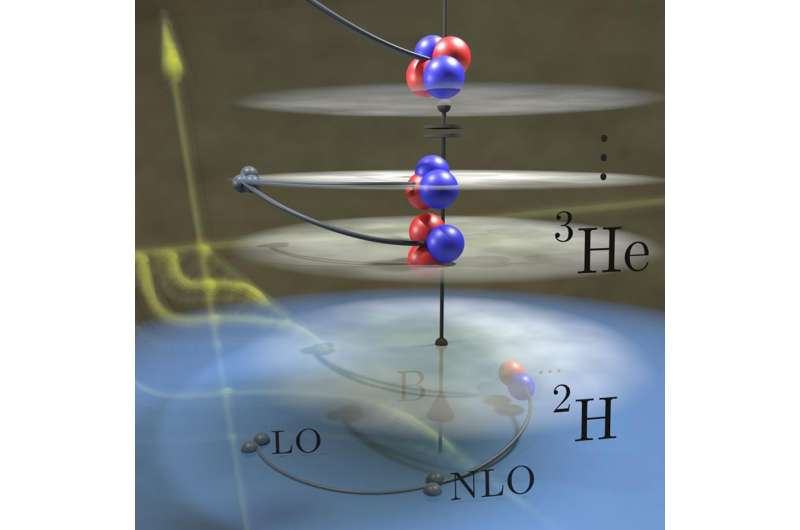Gaining knowledge by simplification

The "strong force" plays a crucial role for the existence of matter in the visible universe. Scientists at TU Darmstadt are carrying out research in that field and recently published their results in Physical Review Letters. To describe the processes in the nucleus they used a method of theoretical simplification which might be applicable to heavier nuclei.
The recent publication concerns the so-called "strong force" that plays a crucial role for the existence of matter in the visible universe. Just how exactly this mechanism, fundamentally described by the theory of Quantum Chromodynamics as the interaction between quarks and gluons (elementary particles that can however not be observed in isolation), brings about the force that binds protons and neutrons together in atomic nuclei is still a matter of active research.
The scientists made use of an important concept in modern theoretical physics: effective field theories. Simply put, such theories boil down microscopic details to their essential content by tailoring the mathematical formalism to the level of detail one aims to describe. This approach can be interpreted as choosing an appropriate "theoretical resolution," much like screens that are watched only from a large distance can have much larger pixels than a smartphone to ensure the same visual impression.
Looking from a distance can in fact enable one to see more, i.e., the famous "bigger picture". In this case, this means starting the description of nuclei with something very simple: in what is known as the "unitarity limit," systems of protons and neutrons exhibit universal behavior which they share with seemingly very different particles like atoms in ultracold gases. In this limit, a single parameter, related to the interaction between three particles, governs the physical properties of observed states. The scientists show that indeed atomic nuclei up to four constituents (i.e., helium) can be well approximated by this simple limit, and that it is possible to systematically increase the theoretical resolution by calculating a sequence of corrections.
This way, a good description of experimentally observed binding energies is achieved with a minimum number of information used as input. The scientists involved conjecture that this approach can also be useful to describe heavier elements.
More information: Sebastian König et al. Nuclear Physics Around the Unitarity Limit, Physical Review Letters (2017). DOI: 10.1103/PhysRevLett.118.202501
Journal information: Physical Review Letters
Provided by Technische Universitat Darmstadt


















